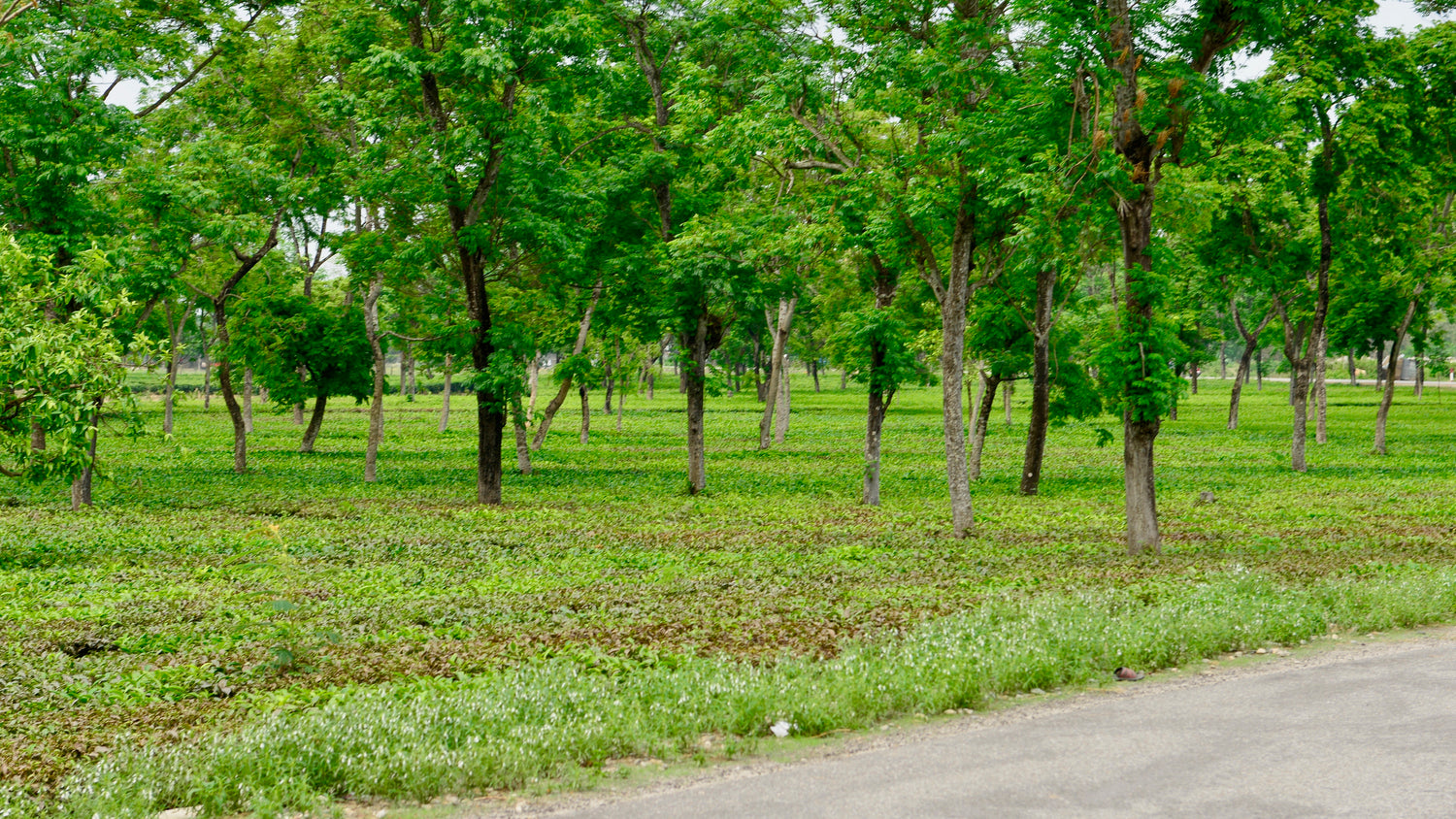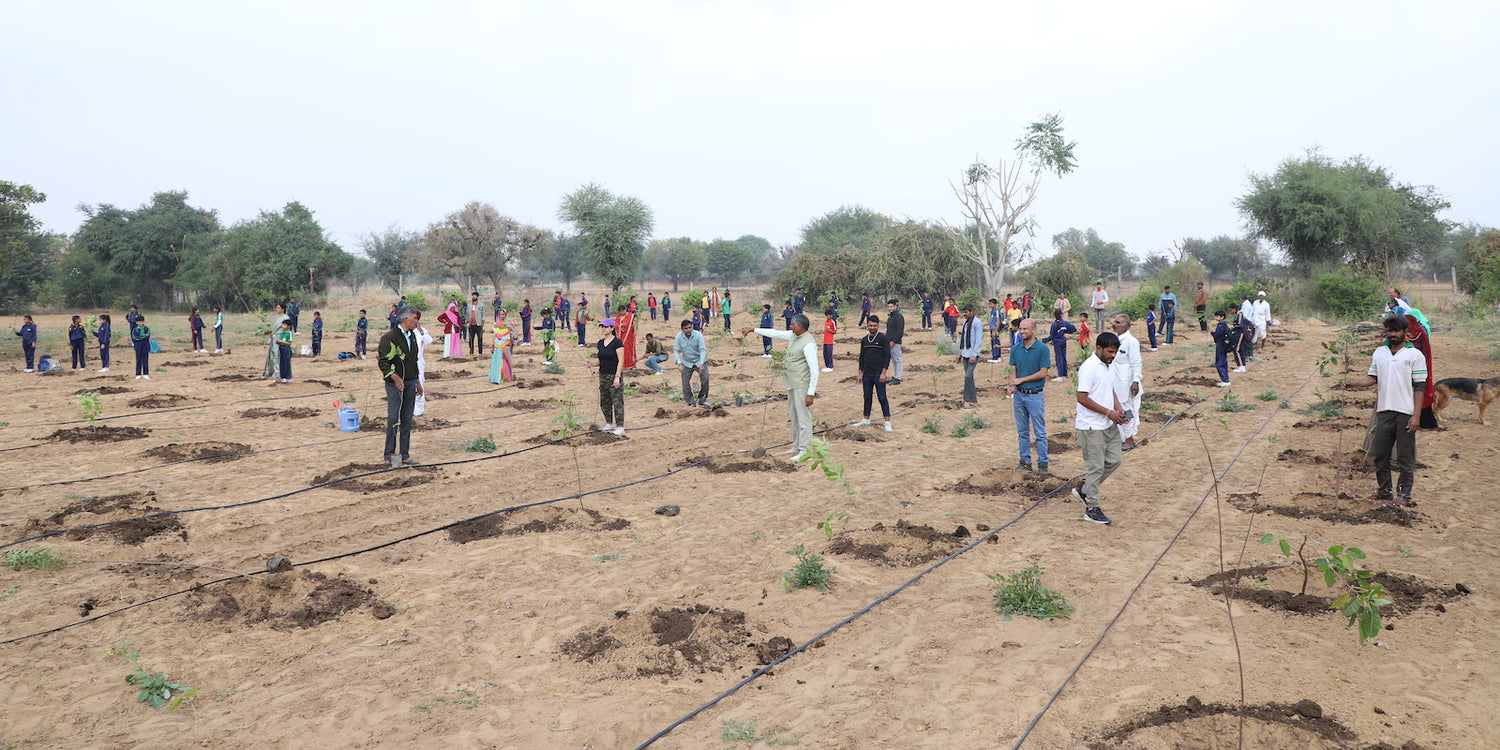Agroforestry in Delhi: Urban Solutions for Green and Sustainable Growt
Delhi, India’s bustling capital, faces unique environmental challenges, from rising pollution levels to shrinking green spaces. Amid the urban sprawl, Read more
Connect with us
-
👥 Corporates
If you are looking for:
- 🌲 Tree Plantation Events
- 📊 CSR Projects
📧 corporate@growbilliontrees.com
📞 +91 9699723523
💬 +91 9325931304 WhatsApp (Only)
🕒 Mon - Sat | 10am - 7pm IST
-
🧩 Tree Plantation NGOs
If you are looking for:
- 💰 Financial Assistance
- 🤝 Operational Support
📧 support@growbilliontrees.com
📞 +91 9699723523
💬 +91 9325931304 WhatsApp (Only)
🕒 Mon - Sat | 10am - 7pm IST
-
🌼 Individuals
If you are looking for:
- 👥 Group Tree Plantation Drive
- 🌳 Bulk Tree Plantation
📞 +91 9699723523
💬 +91 9325931304 WhatsApp (Only)
🕒 Mon - Sat | 10am - 7pm IST
Trending
Trees for Corporates
Agroforestry in Delhi: Urban Solutions for Green and Sustainable Growth
Delhi, India’s bustling capital, faces unique environmental challenges, from rising pollution levels to shrinking green spaces. Amid the urban sprawl, agroforestry emerges as a sustainable solution for tackling these issues.
By integrating trees, shrubs, and vegetation into agricultural and urban landscapes, agroforestry not only revitalizes the environment but also supports sustainable growth in an urban context.
The Historical Context of Agroforestry in Delhi
Agroforestry may seem modern, but its roots in Delhi trace back centuries. During the Mughal era, gardens like the famous Lodi Gardens blended horticulture and forest elements, showcasing the symbiosis between trees and crops.
Traditional practices in villages surrounding Delhi involved planting multipurpose trees like neem and banyan, which offered shade, fodder, and medicinal benefits.
With rapid urbanization post-independence, Delhi’s green cover shrank, giving way to concrete jungles. Today, agroforestry holds the potential to restore this balance, making the city greener and more livable.
The Role of Agroforestry in Urban Environments
Agroforestry in Delhi isn't about large-scale farming—it’s about creating urban ecosystems that enhance green cover, combat pollution, and support local communities. Key applications include:
1. Urban Farming
- Crops: Leafy greens, herbs, and vegetables paired with fruit trees like guava and lemon.
- Impact: Urban farms reduce food miles and supply fresh produce to local markets.
2. Green Buffers
- Trees: Fast-growing species like Morus (mulberry) and Albizia (siris) act as green lungs around roads and industrial areas.
- Impact: These trees filter pollutants, reduce heat islands, and improve air quality.
3. Rooftop Agroforestry
- Concept: Combining rooftop farming with tree species in pots or vertical systems.
- Impact: Lowers urban temperatures, conserves water, and provides food in space-constrained areas.
Environmental Benefits of Agroforestry in Delhi
1. Air Quality Improvement
Delhi’s infamous air pollution is a pressing concern. Trees like neem and peepal, commonly used in agroforestry, are natural air purifiers. Studies show that a mature tree can absorb up to 48 pounds of CO2 annually while filtering harmful particles.
2. Mitigating Urban Heat Islands
Urban heat islands are hotter zones created by dense construction and limited greenery. Tree canopies in agroforestry systems reduce ground temperatures by 5–8°C, making Delhi’s summers more bearable.
3. Water Conservation
Agroforestry systems improve water infiltration and reduce runoff, vital in a water-scarce city like Delhi. Rainwater harvesting integrated with agroforestry can recharge groundwater levels.
4. Biodiversity Conservation
Green corridors created by agroforestry provide habitats for birds, bees, and insects. This biodiversity supports urban ecosystems and enhances pollination.
Economic and Social Benefits of Agroforestry
1. Livelihood Opportunities
Agroforestry supports micro-enterprises such as honey production, medicinal plant farming, and urban nurseries. It empowers marginalized communities, especially in peri-urban areas.
2. Food Security
Delhi’s dependence on food imports can be mitigated by urban agroforestry, which enables local production of fruits and vegetables, reducing transportation costs and carbon footprints.
3. Community Engagement
Urban agroforestry fosters community participation through green initiatives, educational workshops, and collective farming projects, creating awareness about sustainable practices.
Fun Facts About Agroforestry in Urban Delhi
- The Peepal Effect: The peepal tree (Ficus religiosa), widely planted in Delhi, releases oxygen 24/7, making it a cornerstone of urban agroforestry.
- Vertical Forests: Delhi NCR is experimenting with vertical agroforestry in residential towers, blending aesthetics with sustainability.
- City’s Carbon Warriors: A single neem tree in Delhi can sequester around 1.7 kg of carbon annually, helping combat the city's pollution crisis.
- Urban Orchards: Delhi University has integrated agroforestry into its campuses, growing mango, jamun, and guava trees for shade and fruit.
Challenges in Implementing Agroforestry in Delhi
- Land Scarcity: Limited space in the urban landscape restricts large-scale agroforestry projects.
- Water Shortages: Agroforestry requires consistent irrigation, which can be a challenge in water-deficient areas.
- Awareness Gaps: Many residents and policymakers are unaware of the potential of agroforestry in urban settings.
- Policy Barriers: Regulations often hinder the integration of agroforestry into urban planning frameworks.
How Grow Billion Trees Promotes Agroforestry in Delhi
Grow Billion Trees is at the forefront of promoting agroforestry in Delhi, addressing environmental concerns while supporting local communities. Here’s how:
1. Partnerships
- Government Collaboration: Working with Delhi’s urban development authorities to incorporate agroforestry in green initiatives.
- Corporate Involvement: Partnering with businesses to plant trees as part of corporate social responsibility programs.
- Community Engagement: Mobilizing schools, RWAs (Resident Welfare Associations), and NGOs to adopt agroforestry practices.
2. Execution Strategies
- Micro-Forests: Establishing Miyawaki forests in urban spaces to increase green cover rapidly.
- Rooftop Models: Promoting rooftop agroforestry with modular systems that integrate trees and vegetables.
- Tech Integration: Using AI and GIS to identify potential agroforestry zones and track tree growth.
3. Awareness Campaigns
- Hosting workshops and webinars on the benefits of agroforestry.
- Organizing tree-planting drives and eco-fairs to engage Delhi’s residents.
- Launching social media campaigns to highlight agroforestry success stories.
Case Studies: Agroforestry Success Stories in Delhi
1. Miyawaki Forests in Dwarka
Grow Billion Trees collaborated with local authorities to develop Miyawaki forests in Dwarka, creating dense green patches that improve air quality and biodiversity.
2. Rooftop Agroforestry in South Delhi
A pilot project in South Delhi neighborhoods integrated fruit trees with vegetable patches on rooftops. Supported by Grow Billion Trees, this initiative reduced residents’ dependence on market-bought produce.
3. Community Green Spaces in Yamuna Floodplains
In partnership with local NGOs, Grow Billion Trees established agroforestry systems along the Yamuna floodplains, combining tree planting with soil conservation efforts.
Future Prospects of Agroforestry in Delhi
Agroforestry holds immense potential for transforming Delhi’s urban landscape. By 2030, its impact could include:
- Enhanced Green Cover: Increasing Delhi’s tree density to mitigate pollution and urban heat islands.
- Improved Air Quality: Planting pollutant-absorbing tree species to combat smog and respiratory issues.
- Localized Food Systems: Expanding urban agroforestry to provide fresh produce within city limits.
- Stronger Community Bonds: Promoting collective ownership and care for green spaces.
Conclusion
Agroforestry in Delhi is more than an environmental strategy—it’s a lifeline for the city’s future. From improving air quality to fostering biodiversity, this practice offers a sustainable path for urban growth.
Organizations like Grow Billion Trees are making significant strides in promoting agroforestry, turning concrete jungles into green havens.
Through strategic partnerships, innovative models, and grassroots engagement, Grow Billion Trees is empowering Delhiites to embrace agroforestry as a solution for healthier living and a greener future.
Together, we can ensure that Delhi’s growth is not only urban but also sustainable.
Urban Agroforestry in Delhi
A green revolution for the cityscape, urban agroforestry integrates trees, crops, and shrubs in urban spaces, cooling neighborhoods, filtering air, and creating food hubs in the heart of the capital.
Rooftop Agroforestry in Delhi
Transforming concrete rooftops into lush ecosystems, this approach combines fruit trees and vegetables, slashing food miles and giving Delhiites fresh produce right from their terraces.
Miyawaki Forests in Delhi
Rapidly growing urban forests inspired by the Miyawaki method, these dense green patches revive barren land and provide pollution control, biodiversity, and shade in record time.
Pollution-Absorbing Trees in Delhi
Stars like neem and peepal work overtime in agroforestry systems, scrubbing Delhi’s air of toxins and gifting residents cleaner, fresher air without the need for air purifiers.
Vertical Agroforestry in Delhi
Growing green upwards instead of outwards, vertical agroforestry is Delhi’s solution to space crunches, creating walls of life that beautify while absorbing CO2.
Agroforestry in Yamuna Floodplains
Rescuing the neglected Yamuna floodplains, agroforestry restores soil health, prevents erosion, and creates green buffers that improve the local ecosystem.
Community Agroforestry in Delhi
Bringing neighborhoods together, community agroforestry integrates tree planting and urban gardening to create shared spaces that foster sustainability and collaboration.
Educational Agroforestry in Delhi
Schools are planting agroforestry models on campuses, turning them into green classrooms that teach sustainability and deliver environmental benefits to students.
Agroforestry for Urban Heat Control
By integrating shady trees with crop systems, agroforestry reduces urban heat islands in Delhi, cooling the city and saving energy on air conditioning.
Biodiversity Through Agroforestry in Delhi
Urban agroforestry attracts pollinators, birds, and even small mammals, turning dull city spaces into vibrant, buzzing ecosystems.
Water-Saving Agroforestry in Delhi
By pairing tree planting with rainwater harvesting, this model recharges groundwater, prevents waterlogging, and supports Delhi’s green cover despite water scarcity.
Grow Billion Trees in Delhi
Spearheading agroforestry initiatives, Grow Billion Trees partners with communities to plant, nurture, and monitor urban trees, creating long-lasting environmental and social impacts.
You may like
Corporate Plantations
FAQ
What is agroforestry in Delhi?
Agroforestry in Delhi combines trees, crops, and greenery to create eco-friendly urban spaces. Grow Billion Trees supports this by integrating green solutions that combat pollution and promote sustainability.
How does agroforestry improve air quality in Delhi?
Trees like neem and peepal in agroforestry systems absorb pollutants and produce oxygen. Grow Billion Trees plants these natural air purifiers across the city to tackle Delhi’s smog.
Can agroforestry reduce urban heat in Delhi?
Yes, agroforestry reduces heat islands with tree canopies that lower temperatures. Grow Billion Trees promotes shady plantations to cool the city naturally.
What trees are best for Delhi’s agroforestry?
Neem, siris, and jamun trees thrive in Delhi’s climate. Grow Billion Trees carefully selects species that suit the urban environment and benefit local ecosystems.
How does rooftop agroforestry work in Delhi?
Combining trees in pots with vegetables, rooftop agroforestry saves space and produces fresh food. Grow Billion Trees helps residents design these eco-friendly setups.
What is the role of agroforestry in the Yamuna floodplains?
Agroforestry restores degraded land along the Yamuna, preventing erosion and fostering biodiversity. Grow Billion Trees leads projects to make these areas greener and more sustainable.
Does agroforestry support biodiversity in Delhi?
Yes, agroforestry attracts pollinators, birds, and insects, creating mini-ecosystems in urban spaces. Grow Billion Trees ensures native species thrive in these green corridors.
Can agroforestry help conserve water in Delhi?
Trees in agroforestry systems enhance water retention and reduce runoff. Grow Billion Trees integrates rainwater harvesting into agroforestry designs for optimal water use.
How does Grow Billion Trees promote agroforestry in Delhi?
We partner with communities, businesses, and schools to plant trees, create green spaces, and spread awareness about sustainable agroforestry practices in Delhi.
Is vertical agroforestry feasible in Delhi?
Vertical agroforestry maximizes space by growing plants on walls and trellises. Grow Billion Trees supports this innovative approach to greening Delhi’s urban areas.
What are the economic benefits of agroforestry in Delhi?
Agroforestry offers fruits, vegetables, and timber, reducing costs and generating income. Grow Billion Trees helps residents tap into these sustainable economic opportunities.
How can residents get involved in agroforestry projects?
Residents can join tree-planting drives, adopt green spaces, or start rooftop agroforestry. Grow Billion Trees provides tools and guidance to make it easy and impactful.























